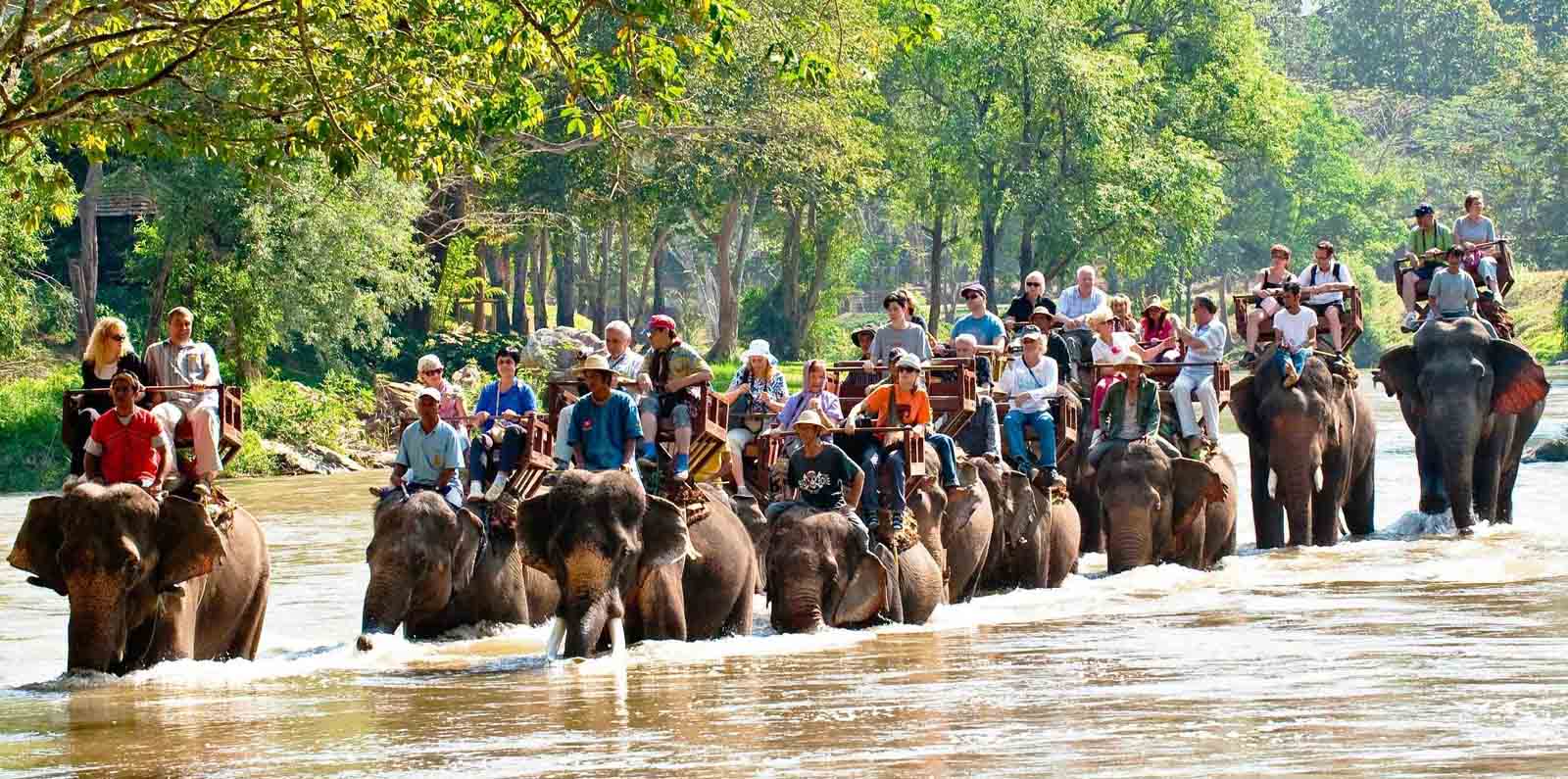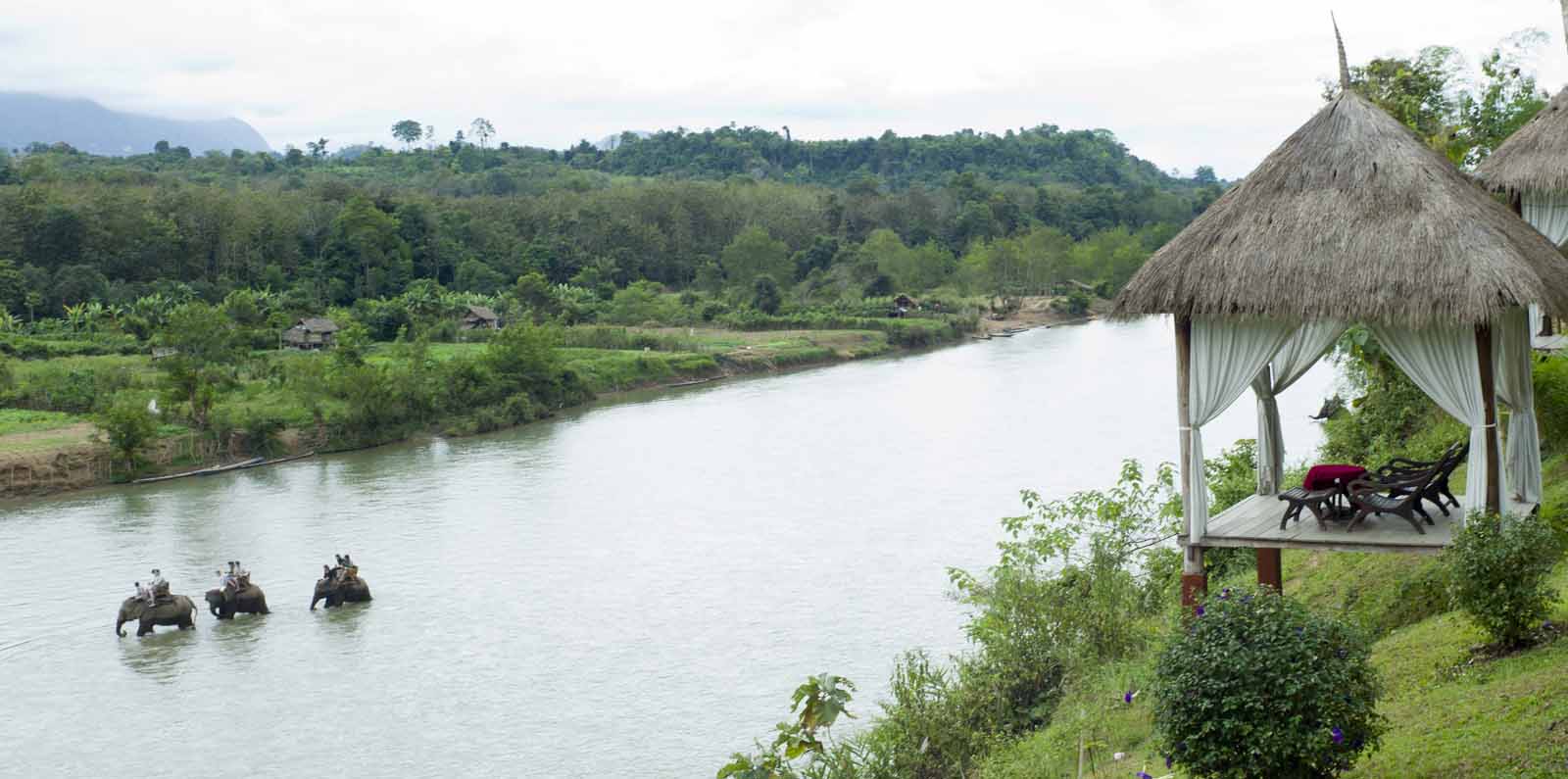For many travellers a trip to Asia would not be complete without a meeting one of the regions most famed residents, the Asian Elephant. It’s easy to book a tour and get your elephant fix, but for those concerned with animal welfare it isn’t as simple as that. Tourism can be both a threat and an opportunity for caring for and protecting the magnificent creatures. The best way to see elephants is in the wild, which is best done in India or Sri Lanka. If you want to see domesticated elephants in Thailand or Laos, it is important to do your research before you travel.
Elephants in Asia
Asian elephants have been an important part of human life in Asia for 4000 years, but with drastically reduced populations, Asian Elephants have now been put on the endangered species list. The main threats to Asia Elephant populations is loss of habitat, conflict with humans, poaching and capture of wild elephants.
Elephants and Tourism
The very best way to see elephants is in the wild. Not only will you see elephants in their own habitat displaying their natural behaviours, but you can be sure you are not contributing to mistreatment.
Tourism may be a key to protecting elephants. Nearly 30% of the Asian Elephants left in the world are currently in captivity. While returning these animals to the wild would be the ideal solution, this is often not practicable. Food, medicine and land for an elephant are expensive. Additionally, once domesticated, elephants can find it hard to survive if returned to the wild. Eco-tourism at a sanctuary where elephants can socialise with each other (and ideally reproduce) in an environment similar can help preserve and even increase elephant populations.
To Ride or not to Ride?
Elephants are wild animals. Our goal is a world where elephants are cared for and protected and not subjected to cruelty for human amusement, which includes riding. In Thailand there are many options where travellers can meet elephants that have been rescued from cruelty and live happily. You should never choose to go to a camp in Thailand that encourages elephant treks, shows or other unnatural interactions. Any place that takes elephants from the wild must be avoided.
Unfortunately in Laos the situation is bleaker. Known as the land of a million elephants, the populations have been decimated with only about 400 elephants left in the wild. Poaching remains a grave issue and there are very few funds to protect the remaining elephants in Laos.
Thailand
Elephants World in Kanchanaburi is an elephant sanctuary with the philosophy that “we work for the elephants, instead of them for us”. Here, you can help take care of the elephants by gathering food, feeding and bathing the elephants.
Elephant Hills is a luxury tented jungle camp in the Khao Sok National Park just a couple of hours drive from Phuket Airport. Home to 12 Asian Elephants, they offer a respectful and interactive experience as well as many other activities in the jungles of Thailand. Book a two, three or four day package with transfers from Phuket, Khao Lak, Koh Samui or Krabi.
Patara Elephant Farm near Chiang Mai offers a one-on-one experience with the elephants. You can book their ”elephant owner for a day” program which teaches you about what is involved in caring for an elephant. Activities include feeding and bathing an elephant, and a short ride on the elephant’s neck. One person riding bareback on the neck is a much more gentle approach than the standard elephant treks and is the best option for travellers that really do want to ride an elephant.
Laos
Shangri Lao Elephant Village near Luang Prabang focuses on the protection and rehabilitation of elephants in Laos as well as providing employment for indigenous people from remote areas.
The Elephant Conservation Centre is about 4 hours from Luang Prabang is dedicated to the conservation and protection of the Asia Elephants within Laos. They offer a chance to see elephants in their native habitat and provide a natural home to elephants rescued from abuse in logging and tourism projects. They have the only hospital dedicated to injured or diseased elephants and run a breeding program which offers mahouts the financial means to breed their elephants.








